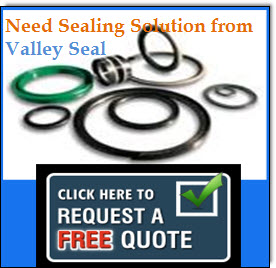Piston seals are popularly used for closing gaps or sealing off joints in hydraulic or pneumatic cylinders. They are designed to seal the cylinder bore and gland completely, thus preventing fluid from leaking out of the system. These seals have a decisive influence on the operation, performance, and longevity of your hydraulic or pneumatic cylinders.
Piston seals exhibit outstanding extrusion properties, exceptional resistance to wear, and excellent friction characteristics. Also, they are compatible with any process media, and offer unmatched performance in low and extreme temperatures.
Application areas of these seals include, and not limited to:
- Aerospace
- Electromechanical
- Climate control
- Filtration
- Fluid and Gas handling
- Process Control
General Note on Installation
To achieve ultimate leakage control, it is essential to install the seals properly. The following are a few instructions that you must follow when installing the item in your hydraulic and pneumatic cylinders.
- Use an installation sleeve in case the cylinder tube has not a lead in chamfer.
- Deburr or chamfer sharp edges.
- Clean the cylinder parts thoroughly. Chips, dirt and other foreign particles must be removed from the application area for effective sealing.
- Inspect the parts that need to be sealed for any score or cut. Scratches on the surface could damage seals, leading to leaks.
- Avoid installing the seal over sharp corners.
- Use lubricants like oil or grease to install seals on the cylinder. However, ensure to use the lubricant that is compatible with the materials used in producing the seals.
- Not to use any sharp edged installation tools, as they could damage the seal while installing.
The aforementioned are a few general tips that must be considered when installing pneumatic or hydraulic piston seals. Although these points seem basic, they will lead you towards successful seal installation. However, following only these points will not help. As an application user, you must read and understand the installation procedures of pneumatic and hydraulic piston seal provided by the respective manufacturer. When in doubt, speak to the manufacturer. S/he will guide you in installing the seal successfully in the application area.






